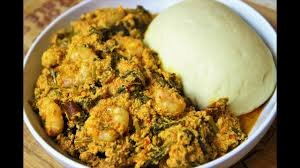Culture is fluid and dynamic, and while it differs from community to community, there are always similar elements that remind me that humans are more connected than we think. This is especially true for West Africa and is more obvious in the culinary elements of our cultures. And unless you’ve been living under a rock for the past few years, I’m sure you’ve heard about the light-hearted Jollof Wars; which is basically banter between Ghanaians and Nigerians about who has the best Jollof. Well, it’s banter for some of us, some people have carried the matter on their heads. In my opinion, Nigerians and Ghanaians don’t have mouth in this matter because Senegal is the real pioneer of Jollof or as they call it: Wolof rice.
Anyway, I’ve always thought how interesting and cool it is that our cultures are interconnected and food is a pretty important part of a culture, so I want to talk about food across West Africa that share the same elements.
JOLLOF RICE
A continuous source of beef and controversy upon the TL, jollof rice is one of the dishes that cuts across many cultures- even the whites want a piece of it e.g Jamie Oliver and the infamous #Jollofgate. Originating from the ancient Wolof or Jolof empire in Senegal during the 14th-16th century, the dish literally translates to “one-pot”. Since then it has travelled from place to place, morphing into specific recipes in these places which include Ghana, Nigeria, Sierra Leone, Gambia, Liberia and Cameroon.
While these recipes differ from region to region, the underlying ingredients are constant and the rice is usually simmered in a sauce made with tomatoes, onions and peppers, some also add vegetables. Spices also play an important role in the making of Jollof rice because what is African food without spice?
It is a staple in Nigerian parties, restaurants and during the holidays. Seriously though what is a party without Jollof rice? Even festivals are held in its honour; so one thing we can all decipher is that Jollof rice is pure magic.
FUFU
Not quite as revered as Jollof rice, Fufu is another staple that exists in many places in West Africa and has even spread outside of Africa to the Carribean. Made from pounded cassava, fufu has a distinct and peculiar scent, and while many are averse to it because of this, others love it despite this fact. It is popular in West and Central Africa and is even one of the staple ‘swallows’ in Ghana.

Image via Nigerian Food Recipes on Youtube
BANGA SOUP
Also known as palm fruit soup, this is another delicacy that cuts across a few West African countries like Nigeria and Ghana. As the name implies, the main ingredient is the palm fruit or palm nut, gotten from the palm tree which is one that grows in these tropical parts.

Image via All Nigerian Recipes.com
GROUNDNUT SOUP
‘Granat soup’ as the people of Sierra Leone who speak Krio call it, groundnut soup is another delicacy a popular to people of these (Sierra Leone, Nigeria, Ghana) parts, and so naturally, any soup made from groundnuts would be a very obvious food choice.

Image via Serious Eats dot com.
KELEWELE
Known as Dodo in Nigeria, Kelewele is basically diced, spiced fried plantain, another favourite. Actually, maybe the closest thing to Kelewele in Nigerian cuisine is Gizdodo; which is plantain and gizzard fried together with pepper and other spices. I know the name gizdodo is not very inspiring, but I assure you that the taste is.

Image via The Only Way is Ghana dot com
EGUSI SOUP
Known as agushi soup in Ghana, egusi soup is another dish that is known far and wide. Elite in any form, this soup is made with the seeds of cucurbitaceous plants like melon and squash and is cooked with palm oil, protein(meat or fish). It’s also used/eaten in other countries like Mali, Togo, Burkina Faso, Benin and Cameroon.

Image via Low Carb Africa dot com
AMALA
The most disrespected of all swallows, in fact, all Nigerian dishes, Amala is also a staple in some other parts of Africa. Made from yam chips flour, amala is also eaten in Benin.

Image via Pinterest
POUNDED YAM
This is another dish that’s quite popular across West Africa. According to Zikoko, it’s called Igname Pilée in Benin Republic. It’s an elite swallow so I’m not surprised.

image via Symplinatural dot com
Are there any other foods you think are similar or share the same elements across West Africa? Share with us!
Featured image via Sympli Natural






.webp)








